Top 10 NFT Artists Making NFT That Represents Social Injustice
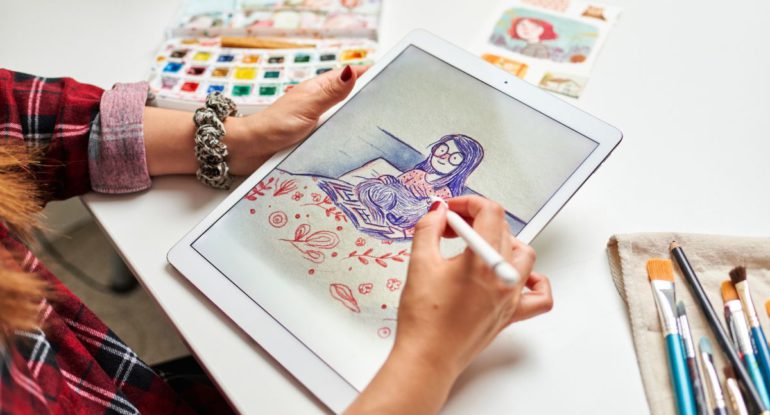
NFT artists refer to artists who create and sell digital artworks as Non-Fungible Tokens (NFTs). NFTs are unique digital assets that are recorded on a blockchain, typically the Ethereum blockchain, providing proof of ownership and authenticity. These digital assets can represent various forms of art, including illustrations, animations, music, videos, virtual reality experiences, and more.
NFT artists have gained significant attention and popularity in recent years due to the increasing interest in blockchain technology and the unique characteristics of NFTs. Unlike traditional artworks, which can be easily replicated and distributed digitally, NFTs are indivisible and cannot be copied or forged. This scarcity and provenance provided by NFTs make them valuable and desirable in the digital art market.
Creating NFTs involves a multi-step process. First, the artist creates a digital artwork using various software tools, such as graphic design software, 3D modeling applications, or coding platforms. The artwork can be entirely digital or a hybrid creation combining physical and digital elements. Once the artwork is ready, the artist chooses a suitable platform or marketplace to mint the NFT.
Minting an NFT involves creating a token on a blockchain network. This process typically requires the artist to pay a transaction fee and provide metadata associated with the artwork, including a title, description, and any additional attributes or unlockable content. The metadata helps provide context and additional information about the artwork, enhancing its value and uniqueness.
After minting, the NFT is publicly listed on the chosen platform or marketplace, where collectors and enthusiasts can discover and bid on the artwork. NFTs can be sold through auctions or direct sales, with the artist setting the price and determining the terms of the sale. When a collector purchases an NFT, they receive a digital certificate of ownership and the associated rights to display, share, or resell the artwork.
NFT artists have leveraged the advantages of blockchain technology and NFTs to explore new revenue streams and connect directly with their audience. They can earn income from the initial sales of their artworks, as well as through secondary market sales when collectors resell the NFTs at a higher price. Additionally, some artists offer limited editions or special perks to their NFT holders, such as exclusive access to future releases, physical merchandise, or invitations to private events.
The rise of NFT artists has sparked a vibrant and diverse digital art community. Artists from various backgrounds and disciplines have embraced NFTs as a medium for self-expression and creativity. The decentralized nature of blockchain technology allows artists from all over the world to participate in the NFT market, fostering a global art ecosystem and promoting cultural exchange.
Critics of NFT art argue that it contributes to environmental concerns due to the energy consumption of blockchain networks. Ethereum, the most commonly used blockchain for NFTs, relies on a consensus mechanism called proof-of-work, which consumes substantial computational power. However, efforts are being made to transition to more energy-efficient blockchain solutions, such as Ethereum 2.0 and other layer-two scaling solutions.
In conclusion, NFT artists are at the forefront of the digital art revolution, leveraging blockchain technology to create, sell, and exhibit their unique digital creations. NFTs provide a new paradigm for artists to monetize their work, establish ownership rights, and engage with a global audience. While the NFT market continues to evolve and face challenges, it has undoubtedly opened up exciting possibilities for artists in the digital age.
Also read: Top 10 NFT Artists Of 2023 Whoes Works You Need To Know
Importance of NFT Artists in the Virtual Space
NFT artists play a crucial role in the virtual space by shaping the future of digital art, establishing ownership rights, and redefining the concept of value in the digital realm. Here are several key points highlighting the importance of NFT artists in the virtual space:
1. Digital Ownership and Authenticity: NFT artists bring a new level of ownership and authenticity to digital art. In the past, digital artworks were easily reproduced and shared without proper attribution or compensation to the artists. NFTs solve this problem by providing a verifiable and immutable record of ownership on the blockchain. This empowers artists to maintain control over their creations and ensures that they receive recognition and compensation for their work.
2. Monetization Opportunities: NFTs have opened up new revenue streams for artists in the virtual space. Traditionally, artists relied on physical sales, gallery exhibitions, or licensing deals to monetize their artwork. With NFTs, artists can directly sell their digital creations to collectors and enthusiasts, eliminating intermediaries and enabling more transparent and efficient transactions. Additionally, artists can earn royalties from secondary market sales, receiving a percentage of the resale price each time their NFT changes hands.
3. Democratization of the Art Market: NFTs have democratized the art market by providing equal opportunities for artists to showcase and sell their work. In the traditional art world, entry barriers and gatekeepers often limited access for emerging artists. The virtual space, enabled by NFTs, allows artists from all backgrounds and geographical locations to gain visibility and reach a global audience. This leveling of the playing field promotes diversity, inclusivity, and a broader representation of artistic voices.
4. Innovation and Experimentation: NFT artists are at the forefront of technological innovation and experimentation in the virtual space. As digital natives, these artists embrace emerging technologies, such as virtual reality, augmented reality, and blockchain, to push the boundaries of artistic expression. By exploring new mediums and formats, NFT artists inspire others and drive the evolution of art in the digital age. Their creative experiments can lead to groundbreaking art experiences that would be impossible to replicate in the physical realm.
5. Community Building and Collaboration: NFT artists foster vibrant and engaged communities in the virtual space. Online platforms and social media channels dedicated to NFT art provide spaces for artists, collectors, and enthusiasts to connect, collaborate, and support each other. Artists can receive feedback, gain exposure, and establish meaningful relationships with their audience. The community aspect also creates opportunities for joint projects, cross-promotion, and shared resources, further strengthening the ecosystem surrounding NFT art.
6. Preservation of Digital Art: Digital artworks face unique challenges when it comes to preservation and archiving. The virtual space is dynamic, and file formats can become obsolete over time. NFTs address this issue by encapsulating digital artworks with metadata and provenance information on the blockchain. This ensures the longevity and preservation of digital art, allowing future generations to appreciate and study these creations. NFT artists contribute to the development of best practices for preserving and archiving digital art, ensuring its cultural and historical significance endures.
In summary, NFT artists are instrumental in the virtual space by revolutionizing the concept of ownership, monetizing digital art, fostering inclusivity, driving innovation, building communities, and preserving the cultural value of digital artworks. Their contributions shape the future of art by embracing technology, empowering artists, and redefining the boundaries of creativity in the digital age.
Also read: The Top 8 Female NFT Artists To Watch For A Impressive Artwork
Top 10 NFT Artists Making NFT that represents social injustice
The non-fungible token (NFT) space has exploded in recent years, with artists using the technology to create and sell unique digital artworks. While many NFTs are purely aesthetic, a growing number of artists are using the medium to raise awareness of social injustice.
Here are 10 of the top NFT artists who are using their work to represent social injustice:
- Pak is an anonymous artist who has created a number of NFTs that address issues such as climate change, poverty, and war. His work is often highly conceptual and uses symbolism to convey its message.

- Beeple is another well-known NFT artist who has used his work to address social injustice. His most famous work, “Everydays: The First 5000 Days,” sold for $69 million at auction in 2021. The work is a collage of 5,000 daily drawings that Beeple created over a period of 13 years.
- FEWOCIOUS is a young artist who has quickly become one of the most popular NFT artists in the world. His work is often raw and emotional, and he often uses it to address issues such as racism, sexism, and mental health.
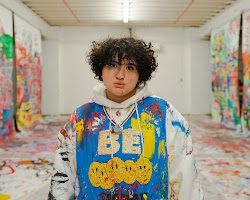
- Trevor Jones is an artist who uses NFTs to create stunning visual representations of environmental issues. His work has been exhibited in galleries around the world, and he has also donated a portion of the proceeds from his sales to environmental charities.
- Mad Dog Jones is an artist who uses NFTs to create dark and dystopian visions of the future. His work often explores themes such as climate change, technology, and inequality.
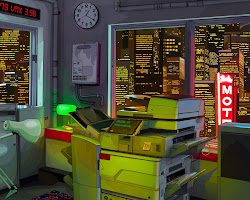
- Gucci Ghost is an artist who uses NFTs to create satirical and subversive works that challenge the status quo. His work often addresses issues such as consumerism, capitalism, and social media.
- Cory Johnson is an artist who uses NFTs to create thought-provoking and visually stunning works that explore the nature of reality. His work has been featured in exhibitions around the world, and he has also donated a portion of the proceeds from his sales to charity.
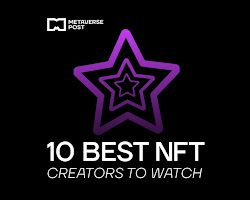
- Krista Kim is an artist who uses NFTs to create immersive and interactive experiences. Her work often explores themes such as technology, the environment, and the future of humanity.
- Evan Keast is an artist who uses NFTs to create works that explore the intersection of art, technology, and social justice. His work has been featured in exhibitions around the world, and he has also donated a portion of the proceeds from his sales to charity.
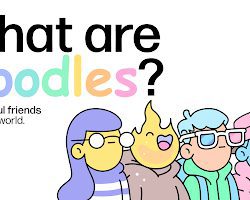
These are just a few of the many NFT artists who are using their work to represent social injustice. The NFT space is still relatively new, but it has the potential to be a powerful tool for raising awareness of important issues. As the technology continues to evolve, it will be interesting to see how NFT artists continue to use their work to make a difference in the world.
Benefits of NFT Artists
NFT artists enjoy several benefits that arise from the utilization of Non-Fungible Tokens (NFTs) in the art world. These benefits contribute to the growth and success of artists working in the virtual space. Here are some key advantages of being an NFT artist:
1. Direct Monetization: NFTs provide artists with a direct avenue for monetizing their digital creations. By minting and selling NFTs, artists can bypass traditional intermediaries, such as galleries or agents, and connect directly with collectors and enthusiasts. This eliminates barriers to entry and allows artists to retain a higher percentage of the sales proceeds, empowering them financially and providing a more sustainable income stream.
2. Royalties and Residual Income: One significant advantage of NFTs is the ability to earn royalties from secondary market sales. Whenever an NFT is resold on platforms that support royalties, the original artist can receive a percentage of the sale. This mechanism ensures that artists can continue to benefit from the increasing value of their artwork even after the initial sale. It creates a potential for long-term residual income, providing ongoing support for artists and incentivizing their continued artistic endeavors.
3. Authenticity and Proof of Ownership: NFTs solve the long-standing challenge of proving the authenticity and ownership of digital artworks. By tokenizing their creations on the blockchain, NFT artists establish an immutable and verifiable record of ownership. This not only protects artists from unauthorized use or replication of their work but also provides collectors with a secure and trustworthy way to validate their ownership rights. The transparent nature of blockchain technology enhances trust and confidence in the art market.
4. Global Reach and Exposure: The virtual space enabled by NFTs offers artists unparalleled global reach and exposure. Artists are no longer constrained by geographical boundaries or limited to a local audience. NFT marketplaces and online platforms provide a global stage for artists to showcase their work, attracting collectors, enthusiasts, and art lovers from around the world. This expanded reach opens up new opportunities for recognition, collaboration, and networking within the international art community.
5. Creative Freedom and Innovation: NFTs encourage artistic experimentation and innovation. Artists are free to explore unconventional mediums, styles, and concepts, as the digital realm provides infinite possibilities for expression. The flexibility and versatility of digital art allow NFT artists to push the boundaries of traditional art forms, blending disciplines, and integrating emerging technologies. The market for NFT art values creativity and originality, providing artists with an environment that fosters innovation and rewards bold artistic visions.
6. Engagement with Collectors and Community: NFT artists have the opportunity to directly engage with their collectors and build a vibrant community around their work. Online platforms and social media channels dedicated to NFT art facilitate interactions and conversations between artists and their audience. Artists can receive direct feedback, collaborate with enthusiasts, and develop a loyal following. This direct connection enhances the artist’s understanding of their audience’s preferences, creates a sense of belonging, and can lead to deeper relationships and long-term support for their artistic journey.
7. Preservation and Legacy: NFTs contribute to the preservation and legacy of digital art. By encapsulating artworks with metadata and provenance information on the blockchain, NFTs ensure the longevity and accessibility of digital creations. This allows future generations to appreciate and study these artworks, preserving their cultural and historical significance. NFT artists actively contribute to the development of best practices for archiving and preserving digital art, ensuring that their contributions endure beyond their immediate reach.
In summary, NFT artists enjoy benefits such as direct monetization, royalties, enhanced authenticity, global reach, creative freedom, engagement with collectors, and the preservation of their artistic legacy. NFTs have revolutionized the art market, empowering artists in the virtual space and creating opportunities for sustainable success and recognition.
Future of NFT Artists
The future of NFT artists holds tremendous potential as the NFT market continues to evolve and expand. Here are some key aspects that shape the future of NFT artists:
1. Increased Mainstream Adoption: NFTs have gained significant attention and adoption in recent years, but their mainstream appeal is still growing. As more individuals become familiar with the concept of NFTs and digital ownership, the demand for NFT art is likely to increase. This broader adoption will create new opportunities for NFT artists, attract more collectors, and expand the overall market size.
2. Integration of Virtual Reality and Augmented Reality: Virtual reality (VR) and augmented reality (AR) technologies are expected to play a significant role in the future of NFT art. These immersive technologies can enhance the viewing experience of digital artworks, allowing collectors to interact with the art in virtual or augmented spaces. NFT artists will explore the integration of VR and AR, creating unique and captivating art experiences that go beyond traditional 2D or 3D formats.
3. Collaboration and Cross-Disciplinary Projects: NFTs provide a platform for artists from different disciplines to collaborate and create innovative projects. We can expect to see more collaborations between visual artists, musicians, filmmakers, game developers, and other creative professionals. These cross-disciplinary projects will blur the lines between art forms, resulting in groundbreaking multimedia artworks and immersive experiences.
4. Expansion to Physical Assets: While NFTs are primarily associated with digital art, there is a growing trend of artists tokenizing physical assets as well. Artists can create NFTs representing physical artwork, collectibles, or real-world assets like real estate or luxury items. This convergence of physical and digital assets will open up new avenues for NFT artists to monetize their work and provide collectors with unique hybrid ownership opportunities.
5. Environmental Considerations: The environmental impact of blockchain technology, particularly the energy consumption of proof-of-work networks like Ethereum, has raised concerns in the NFT community. In response, there is a growing emphasis on exploring more energy-efficient blockchain solutions and adopting sustainable practices. The future of NFT artists will likely involve a shift towards greener alternatives, such as transitioning to proof-of-stake networks or utilizing layer-two scaling solutions.
6. Advancements in Blockchain Technology: The underlying blockchain technology supporting NFTs is continuously evolving. Improvements in scalability, interoperability, and user experience will shape the future of NFT artists. Enhanced blockchain solutions will enable faster and more cost-effective transactions, attract new participants to the NFT market, and support the growth of artist communities and platforms.
7. Regulation and Legal Frameworks: As the NFT market matures, there will likely be increased scrutiny and regulation from governments and regulatory bodies. Establishing legal frameworks and standards for NFTs will provide artists and collectors with a more secure and transparent environment. Clear regulations can also mitigate potential risks, such as copyright infringement or fraudulent activities, ensuring the long-term viability and trust in the NFT art market.
8. Evolving Business Models: The future of NFT artists will witness the development of new business models and revenue streams. Artists may explore subscription-based models, memberships, or fractional ownership of NFTs. They may offer access to exclusive content, experiences, or services to NFT holders, creating additional value and generating ongoing revenue. These evolving business models will drive innovation and sustainability in the NFT art market.
In summary, the future of NFT artists is promising, with increased mainstream adoption, integration of immersive technologies, cross-disciplinary collaborations, tokenization of physical assets, environmental considerations, advancements in blockchain technology, regulatory frameworks, and evolving business models. NFT artists will continue to redefine the art industry, leveraging the unique advantages of NFTs to create, monetize, and engage with their audiences in exciting and transformative ways.




























































